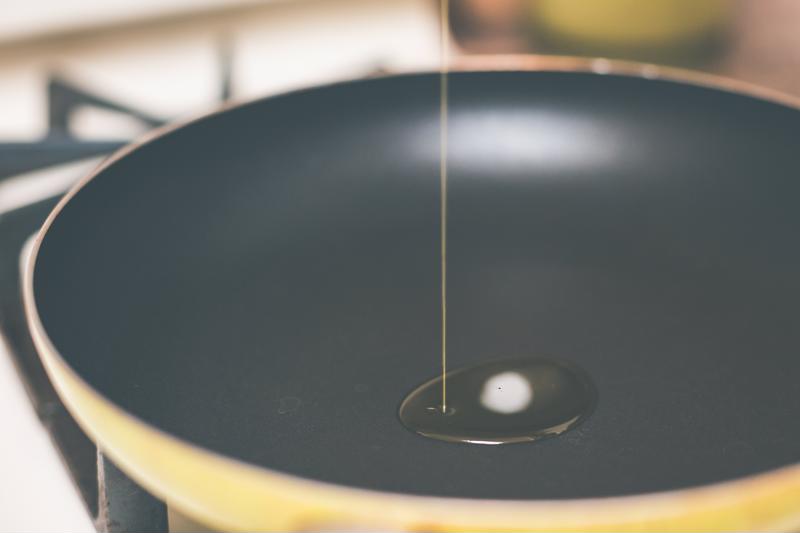Deglazing is a critical skill for all chefs. Using the flavors that cook in the bottom of a pan, skillet, pot or similar tool and turning them into a delicious accompaniment for a protein or another dish entirely is a skill that sets culinary arts students apart. As you consider attending on online culinary arts school, keep this information about making great pan sauces in mind.
 This sauce starts with remnants of a dish previously cooked in the same pan.
This sauce starts with remnants of a dish previously cooked in the same pan.How do you deglaze a pan?
Deglazing relies on a protein or vegetable being cooked in a pan or pot. As the food cooks and reacts to the heat, it will leave deposits in the bottom of the pan. These remnants, often referred to using the French terms sucs or fond (although fond can also refer to a sauce made of these pieces), stay in the pan with a small amount of cooking fat while the protein is plated or set to the side – vegetables can be left in the pan. A chef then returns the pan to high heat, as The Los Angeles Times described, and adds a liquid, which can range from wine or a soup stock to simple tap water. From there, the only necessary actions are to persistently scrape the bottom of the pan with a wooden spoon, add more liquid if needed and let the mixture reduce to the desired consistency.
It’s important to note that you can add more ingredients during the deglazing process – one of the most popular and common results of these additions to the base instructions is gravy, including butter and flour – but it’s by no means necessary. To create the best flavor mixture possible, be sure to taste the sauce, then adjust your cooking time and incorporate additional ingredients as needed.
Additionally, you should distinguish between fond and any burned, carbonized pieces of food, which should be removed. The fond is generally dark brown and not crispy or brittle like carbonized food.
What is a pan sauce?
The term pan sauce covers a lot of ground. Everything from a simple sauce made of just wine and fond to a complex soup base featuring many additional ingredients all fall under this label as long as they originated through deglazing. This should be an encouraging concept for culinary arts students, as there are so many ways to experiment with deglazing and pan sauces. You can develop your own recipes or follow long-established steps created by experienced chefs.
A few pan sauce examples to get started
Use these examples to get comfortable deglazing in a variety of circumstances:
- Some beers make for an excellent liquid, Escoffier culinary arts and pastry arts graduate Ryan Hodros says you can use beer in place of wine, stock or water.
- Pointers for a perfect pan sauce from Bon Appetit include details like which aromatics to add and when, as well as creating an element of creaminess by bringing butter into the mix. This practical advice can help you develop your own personal pan sauce recipes for everything from sauteed onions to a New York strip steak.
- This recipe for country gravy accompanied by sausage and biscuits from the Food Network proves a pan sauce can improve a wide variety of dishes. While the end result is rich and thick, the same mechanism is still at work, although the sausage remains in the skillet the entire time.
A great pan sauce can help you turn a good dish into a great, unique and memorable one.




